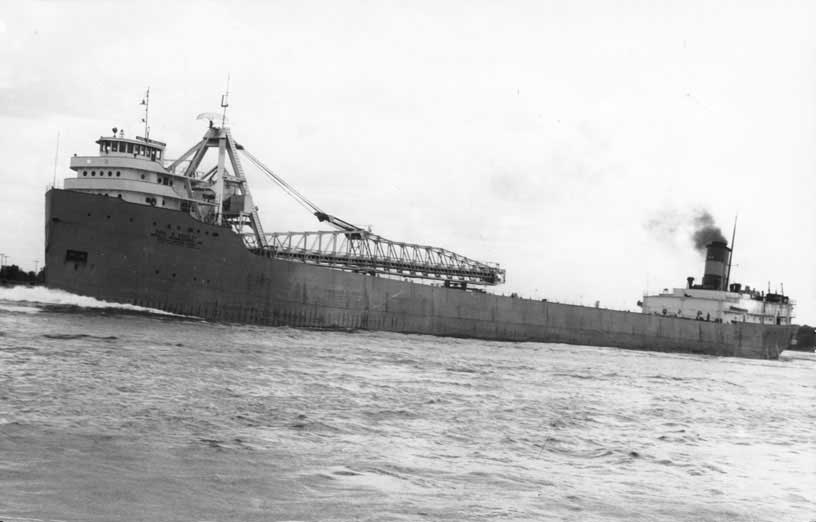
Shipwreck: Carl D. Bradley
By Skip Gilham, Vineland, Ontario, Canada
|
Ships capable of discharging their own cargoes are now the norm on the Great Lakes. Free flowing commodities such as taconite ore, coal, salt, potash, gypsum, sand, stone, and grain can be unloaded to shoreside facilities via a boom and conveyor belt.
The first brand new vessel of this type was the 304 foot long Wyandotte of 1908. Similar ships were added to the inland fleet and by 1927 another new freighter, the largest yet, was completed at Lorain, Ohio.
This 638 foot long steamer was launched on April 9, 1927, and commissioned as the Carl D. Bradley on July 28. The ship went to work for the Bradley Transportation Company and immediately set a cargo record for limestone delivering 14,627 tons from Calcite, Michigan, to Buffington, Indiana. The Carl D. Bradley reset the limestone record on numerous subsequent occasions as the company had a contract to deliver a million tons annually to Universal Portland Cement.
The McArthur Lock was opened at Sault Ste. Marie, Michigan, on July 11, 1943, and the Carl D. Bradley, en route to Algoma Steel at Sault Ste. Marie, Ontario with limestone, was the first ship to use the new lock. The vessel is shown, several years later, off Port Huron, Michigan, in a photo by Paul A. Michaels.
Carl D. Bradley continued to carry impressive payloads for the owners and was slated for a major renovation to the cargo holds at the end of the 1958 season. In addition, two groundings off Port Dolomite, near Cedarville, Michigan, during the year had left some hull damage that required attention.
After discharging the last load of the season, the Carl D. Bradley was upbound on Lake Michigan. Sixty mile an hour winds and towering waves battered the cargoless ship and on November 18, 1958, the hull suddenly cracked.
There was little time to react as the Carl D. Bradley quickly succumbed and sank to a depth of 360 feet southwest of Boulder Reef. Those who were able to get off the doomed ship took to the lifeboats, but by the time they could be found many hours later only two men from the crew of 35 had survived the harrowing ordeal.
Page last modified: